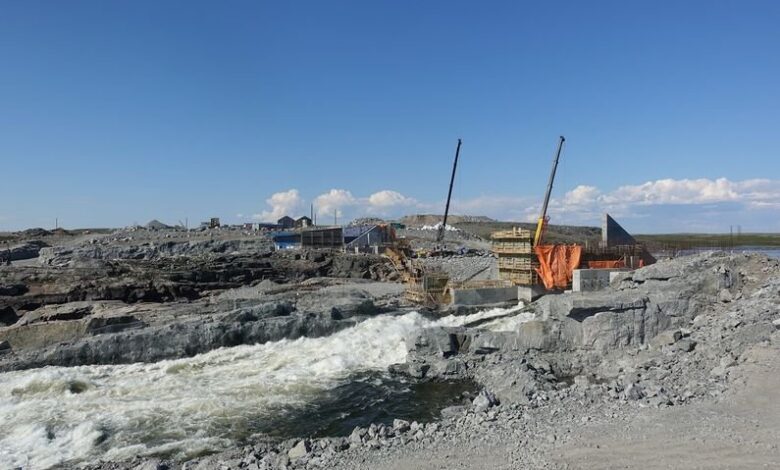Measuring the environmental impact of a hydroelectric dam in Inukjuak

The Innavik Hydro project, currently under construction by Pituvik Landholding Corporation in partnership with Innergex Renewable Energy Inc., will soon enable the Inuit community in Inukjuak to transition fully to hydroelectric. There will be a power plant running on the Innuksuac River.

A hydroelectric dam is under construction on the Innuksac River at Inukjuak (Hudson Bay). Image credit: Dominic Ponton
The village is now powered by electricity generated from diesel engines. With the hydroelectric project, it will be possible to start the energy transition. The 7 megawatts of electricity generated by the plant will exceed community needs, and Inukjuak can use the excess energy to support new local businesses and diversify the economy.
The dam, one of the first in the world to be built on permafrost, was built in a year. It is a dam in the middle of the river, which means that large areas of land will not be flooded to create an artificial reservoir.
However, some land upstream must be submerged to bring water into the plant. Pollutants, including mercury and hydrocarbons, can be released from the permafrost into the environment.
Monitoring impacts on the environment and people
To measure the potential impact of these pollutants, Professor Marc Amyot and his research team from the Department of Biological Sciences at the University of Montreal traveled to Inukjuak. They begin by characterizing the environment in its present state, before the flood. This study is part of a four-pronged research project that includes monitoring the Saint-Maurice and Romaine rivers.
“The Inukjuak component of the project will monitor the environment to determine if there is any deterioration of the permafrost throughout the seasons, after the soil upstream of the plant is submerged,” explains Amyot. in November. “Mercury permafrost can be released during cycles of freezing and thawing, and then carried downstream of the river.”
Therefore, measurements were taken this summer so that the data can be compared with the data recorded after the Inukjuak hydroelectric power station started operation.
Focus on mercury
The team will pay particular attention to mercury methylation by river microorganisms.
Mercury methylation is a natural biological process that produces methylmercury, a highly toxic compound that accumulates in living tissues and increases in concentration moving up the food chain, from aquatic insects to fish to organisms fish eaters, including humans.
“One of the goals of our research – both in Inukjuak and on the Saint-Maurice and Romaine rivers – was to assess the human ability to absorb contaminants and nutrients as food is digested, ‘ added Amyot. “We’ve created a protocol that simulates human digestion in the lab so we can estimate what fraction of the compounds are available, depending on how the food is prepared and cooked.”
The Saint-Maurice and Romaine rivers are also being monitored
Amyot’s research project will also examine the impact of hydroelectric dams on Indigenous lands around the Saint-Maurice and Romaine rivers.
The project was originally designed by Hydro-Québec and Innavik Hydro, with the Inuit community of Inukjuak, the Innu community of Ekuanithit and the Atikamekw community of Wemotaci. It received $1.9 million in funding from a Canadian Union Engineering and Natural Sciences Research Council grant program.
For decades, floating diary down the Saint-Maurice River. The combination of logging along the river and past major wildfires may have increased the mercury input to the river. The ambitious goal of the project is to assess the combined impact of 10 hydroelectric dams and landscape disturbances on mercury levels in sediment, water and aquatic life, along 300 km of the ocean. river.
The Romaine River research project started in 2016 and looks at four hydroelectric dams.
“Our initial results show high levels of mercury in the water near these dams,” said Amyot. “What is surprising is that the pollutant peaks were observed as early as June. Usually, they will be seen in late summer. ” Therefore, the project will study the mechanisms of mercury methylation under ice in winter.
Source: University of Montreal




